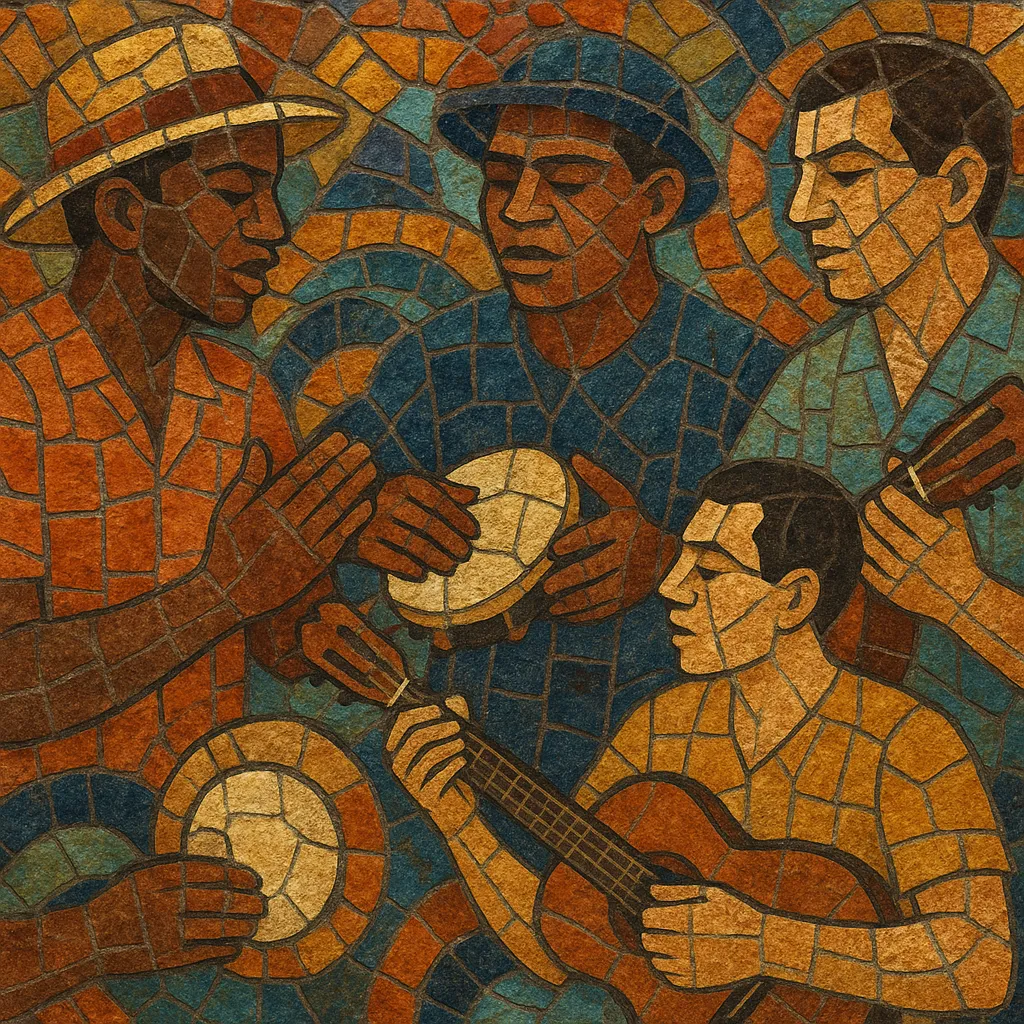Partido alto is a traditional Rio de Janeiro style of samba built around an infectious hand-percussion groove and spontaneous verse improvisation. Typically sung in a roda (circle), a soloist delivers short, witty verses while the chorus answers with a fixed refrain, creating lively call-and-response.
The hallmark is the partido-alto groove—an accented, syncopated samba feel often carried by pandeiro, tantan, repique de mão, surdo, and handclaps—under string instruments like cavaquinho and 6/7‑string guitar. Lyrics tend to be playful, streetwise, and topical, drawing on humor, neighborhood life, and the poetics of the malandro archetype.
Partido alto emerged in Rio de Janeiro’s Afro-Brazilian communities in the early 1900s as a participatory, improvised branch of urban samba. It distilled older influences—especially the Bahian samba de roda and lundu—alongside choro’s instrumental practice, the dance-hall swing of maxixe, and drumming traditions often referred to collectively as batuque and jongo. By the 1910s–1920s, the roda format and the alternation between improvised verses and a fixed refrain were already characteristic.
Partido alto developed a distinctive groove that percussionists and drum set players later codified as the “samba partido-alto” pattern. In social practice it flourished at backyard gatherings, carnival rehearsals, and community rodas, privileging sharp lyrical wit, quick thinking, and collective participation. The structure typically alternates: a coro (refrain) sung by all, then short solo verses (quadras or improvisos) by cantadores who challenge one another in friendly competition.
In the late 1970s and 1980s, the Cacique de Ramos gatherings in Rio revitalized partido alto. The group Fundo de Quintal (and members like Almir Guineto, Arlindo Cruz, Sombrinha, and Jorge Aragão) reintroduced the tantan and repique de mão, refined the groove, and took the style onto records and national television. This wave fed directly into the rise of pagode and later pagode romântico, which preserved the roda spirit but smoothed the arrangements for broader audiences.
Today, partido alto remains a living tradition in rodas across Brazil and the diaspora. Veteran sambistas and younger artists alike keep the improvisatory ethic alive, while percussionists, drummers, and arrangers continue to reference the partido-alto groove in samba-jazz, MPB, and popular stage productions.


